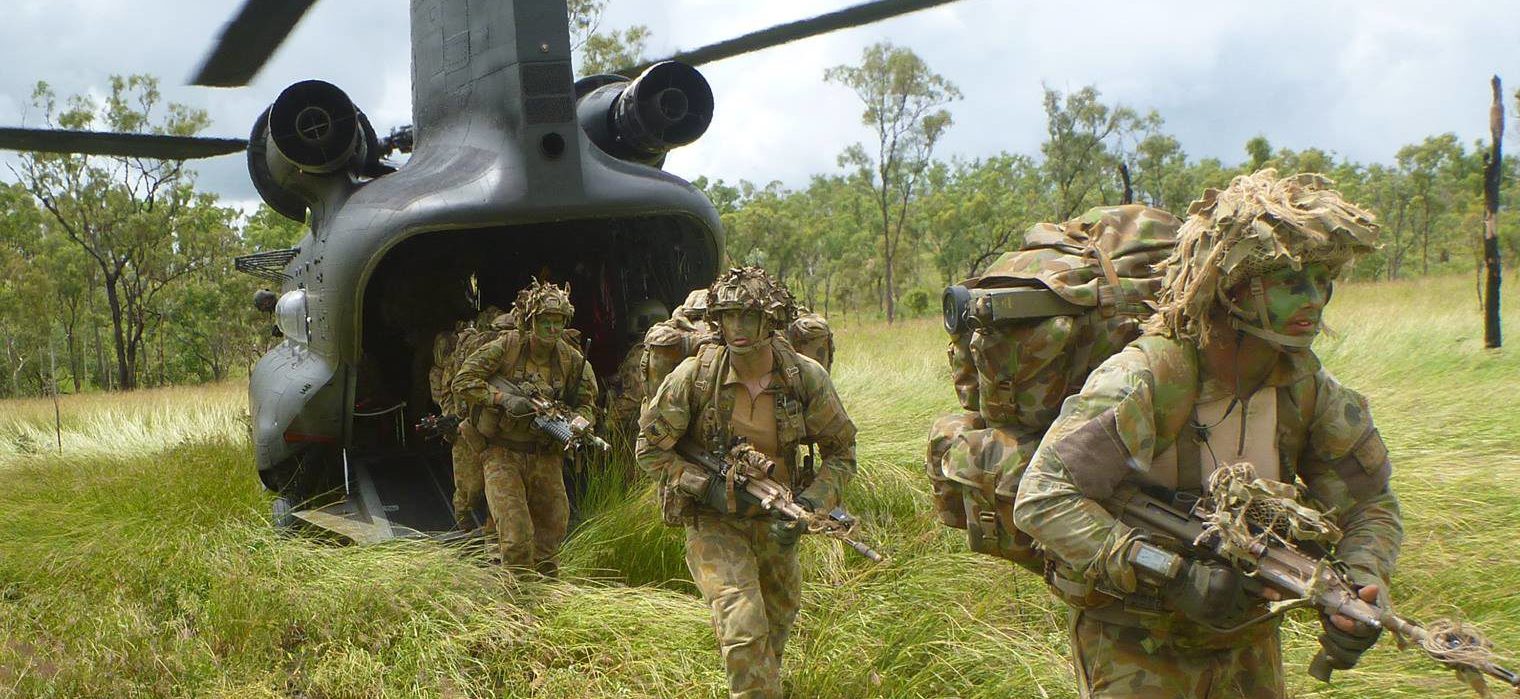The following is based upon my experience over the last five years as a Commanding Officer and Commander of the Combat Training Centre (CTC). It encompasses failure, success and the odd epiphany. Importantly, it is a synopsis of the thousands of observations collected by professional observer trainers and those who design, plan and execute collective combat training. For ease of simplicity, I simply call them Commander CTC’s “Fast Five”.
1. Treat FORGEN as OPGEN
Within the resources available, replicate the requirements of an operational deployment in your normal training regime. Concept Design, Initial, Main and Final Planning Conferences are not dissimilar to the steps of the Military Appreciation Process: Intelligence Preparation of the Battle space, Mission Analysis, Course of Action Development (COA-D) and Course of Action Analysis. Use the tools, inputs and outputs of military planning and adapt them to suit the training. Undertake battle procedure including mounting your force and establish and maintain tactical communication with your elements at your home location. Importantly, capture lessons throughout and have a process to implement changes for follow on activities.
2. Know the Enemy
An adversary framework enables a commander to stress and test their force, from small team to large formation level exercises. It also reinforces the importance of understanding the military capabilities that exist beyond that of your own force. When you know the enemy, you appreciate their strengths and weaknesses versus your own and will develop plans, tactics, techniques and procedures to exploit your strength and the adversary weakness. Most importantly you will fight the adversary, not your own plan. Those who do not know the enemy will inevitably fight their own plan, not the enemy. This rarely leads to success.
3. Command involvement is not negotiable
Staff undertakes planning but it is and always will be the commander’s plan. The level of command involvement should correlate with both the experience of the staff and the confidence a commander has in the team. Too often staff undertakes process and produce products to brief a commander, just to be asked questions and be provided direction that requires significant re-planning. This is always minimised when commanders are engaged regularly at key points. The staff will quickly understand how the commander thinks and confidence and efficiency improves. It is obvious when a commander has not trained the staff and engaged in planning, and the plan is not fully owned by either.
4. Course of Action Development (COA-D) must not be compromised
A systemic weakness in the Australian Army, COA-D is often compromised as time, staff familiarity and cohesion is lacking. COA-D is arguably the most critical part of the planning process. COA-D is where the key mechanics of a plan are coordinated, the combined arms and joint elements of a staff are integrating their inputs and achieving the Decisive Events developed after Mission Analysis. It is also the first time the staff can provide input to the commander on the efficacy of any direction provided. What invariably occurs is that the time available to conduct COA-D is short, the staff is not intimately familiar with the process or each other and the key outputs of COA-D do not occur in sufficient detail to take to war gaming. The consequence is that war gaming becomes a “quasi COA-D” and any rehearsals become an abbreviated war-game. If the plan cannot be stressed in war gaming and synchronised through rehearsals then key battle staff will have insufficient synchronisation tools to deal with uncertainty as it appears upon execution (and it will!). Commanders need to ensure the staff “knows what right looks like” in COA-D and commit their time working with the planning teams.
5. Take Calculated Risk
In every CTC warfighter exercise an opportunity exists for a force to take risk to achieve mission success. It is rare for this to be recognised and seized upon. Although there is no singular reason, one consistent theme identified is that subordinate commanders either do not have a robust knowledge of the plan and how it is to be coordinated (one and two up), or have not been given a risk threshold. Commanders must provide their subordinates an understanding of what risk they can or cannot assume. Ideally this is first developed via command team discussions and direction, then Tactical Exercise Without Troops (TEWTs) and finally in the field. In After Action Reviews, ensure risk is always discussed so that risk threshold is adjusted via agreed metrics to become “calculated risk”.
My COMD CTC “Fast Five” can be summed up in a single word…”familiarity”. Every successful sub-unit, unit and formation in recent years, whether it be in training or operations has demonstrated a comprehensive commitment and understanding of these five elements. Although I cannot guarantee mission success if you commit to the Fast Five (even a good plan, well executed can fail), I can guarantee our Army will not improve at the tactical and operational level without them.
About the author
Colonel Damien Hill is an Artillery Officer who has recently commanded the 4th Regiment, RAA and the Army’s Combat Training Centre. He is currently posted to the Office of the Vice Chief of Defence Force.

